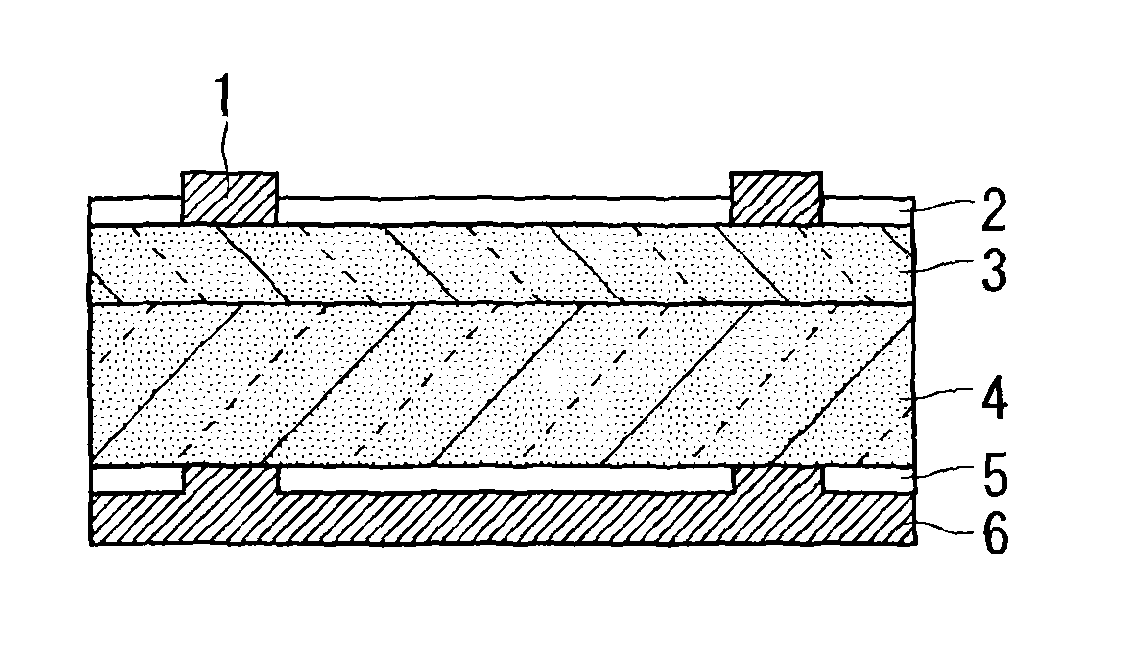Solar cell manufacturing method
a manufacturing method and solar cell technology, applied in the field of solar cell manufacturing methods, can solve the problems of reducing the lifetime of minority carriers, remarkably lower conversion efficiency of thinner silicon substrates, etc., and achieves the effects of reducing manufacturing costs, improving production efficiency, and being easy to handl
- Summary
- Abstract
- Description
- Claims
- Application Information
AI Technical Summary
Benefits of technology
Problems solved by technology
Method used
Image
Examples
embodiment 1
[0023]FIG. 2 is a view of a schematic configuration of a film forming apparatus capable of implementing the method for forming the aluminum oxide film 5 according to the present embodiment.
[0024]As shown in FIG. 2, the film forming apparatus includes a reactor 11, a heater 13, a solution container 15, and a mist forming apparatus 16.
[0025]In the film forming apparatus, a given solution 14 that has been misted is sprayed onto the back surface of the p-type silicon substrate 4, whereby the aluminum oxide film 5 is formed on the back surface of the p-type silicon substrate 4.
[0026]While the p-type silicon substrate 4 is placed on the heater 13, mist (the aqueous solution 14 having a small particle diameter) is supplied into the reactor 11 in the atmosphere, and then, the aluminum oxide film 5 is formed on the back surface of the p-type silicon substrate 4 as a result of a given reaction. Note that the front surface of the p-type silicon substrate 4 is placed on the heater 13.
[0027]The ...
embodiment 2
[0041]The inventors vigorously performed a number of different experiments, analyses, and the like, thus successfully finding the method for forming the aluminum oxide film 5 that significantly improves the lifetime of carriers. That is, the inventors have successfully found film forming conditions for increasing the passivation effects of the aluminum oxide film 5. The following describes the film forming method.
[0042]FIG. 3 is a view of a schematic configuration of a film forming apparatus capable of implementing the method for forming the aluminum oxide film 5 according to the present embodiment.
[0043]As is clear from the comparison between FIG. 2 and FIG. 3, the film forming apparatus according to the present embodiment has the configuration in FIG. 2 and additionally includes an ozone generator 17. The following describes the part distinct from the configuration in FIG. 2.
[0044]The ozone generator 17 is capable of generating ozone. For example, in the ozone generator 17, a high...
PUM
| Property | Measurement | Unit |
|---|---|---|
| speed | aaaaa | aaaaa |
| thickness | aaaaa | aaaaa |
| thickness | aaaaa | aaaaa |
Abstract
Description
Claims
Application Information
 Login to View More
Login to View More - R&D
- Intellectual Property
- Life Sciences
- Materials
- Tech Scout
- Unparalleled Data Quality
- Higher Quality Content
- 60% Fewer Hallucinations
Browse by: Latest US Patents, China's latest patents, Technical Efficacy Thesaurus, Application Domain, Technology Topic, Popular Technical Reports.
© 2025 PatSnap. All rights reserved.Legal|Privacy policy|Modern Slavery Act Transparency Statement|Sitemap|About US| Contact US: help@patsnap.com


